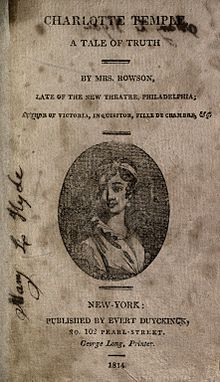Seduction novel

The seduction novel is a literary genre which was popular in the late 18th and early 19th centuries. A seduction novel presents the story of a virtuous, but helpless woman who is seduced by a man that will eventually betray her. "Inevitably, she yields herself to him; inevitably, she dies." Her failure to adhere to the commonly accepted standard of sexual behaviour leads to her "self-destruction and death".[1]
Examples include Charlotte Temple by Susanna Rowson (1791),[1][2] The Coquette by Hannah Webster Foster (1797),[2] and the short story The Quadroons by Lydia Maria Child (1842). Harriet Jacobs's autobiography Incidents in the Life of a Slave Girl (1861) is in some ways linked to this genre, but here the sexual transgression of the narrator doesn't lead to self-destruction, but the book ends with the narrator's gaining freedom for herself and her children.[1]
The Coquette and Charlotte Temple were two of the first bestsellers in America and were popular among most critics during their publication.[2]
